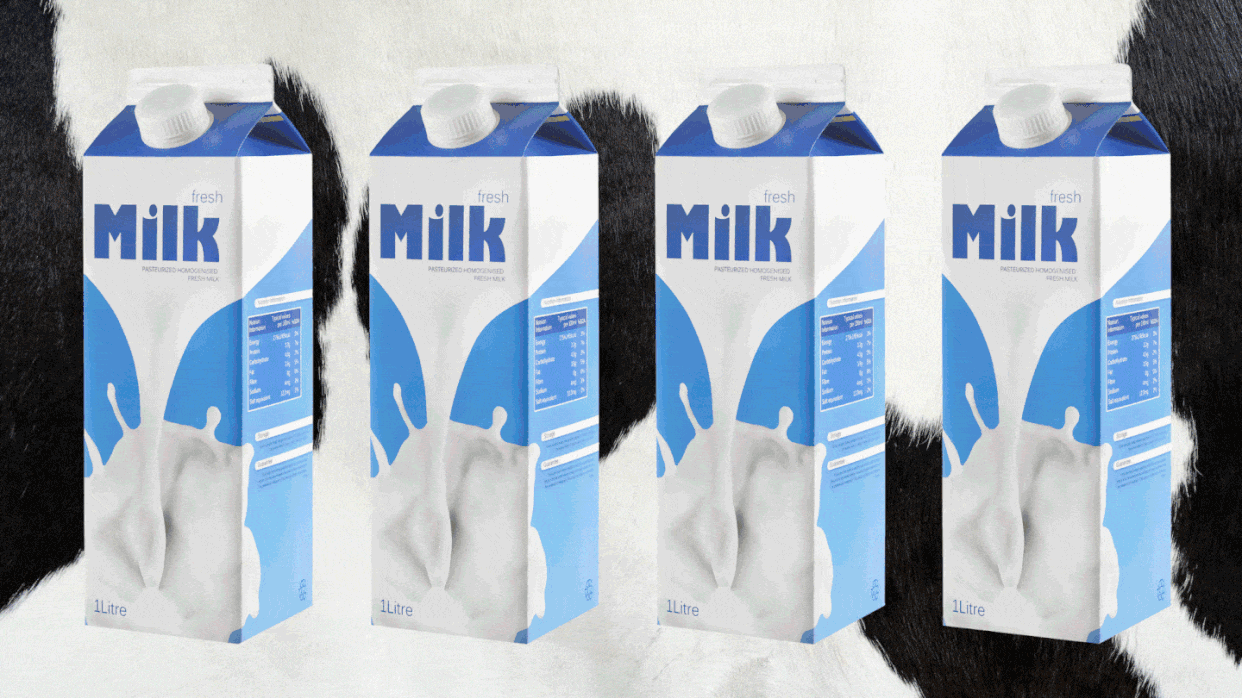Are People Really Going Back To Cow's Milk?

"Hearst Magazines and Yahoo may earn commission or revenue on some items through these links."
Gone are the days of Got Milk? posters in school cafeterias and a glass of milk served with every meal. Walk into any coffeeshop and you’ll likely hear more orders with oat, almond, soy, or coconut milk than dairy milk. Plant-based milks have taken over grocery store aisles, but lately there have been murmurs about the triumphant return of cow’s milk.
From Texas to New York, stories have indicated that cow’s milk might be trending upward. A 2022 Texas Monthly story cited USDA Economic Research Service (ERS) data showing that 2020 was the first year in decades that national dairy milk consumption held steady and didn’t drop. Although in 2021, milk consumption declined again.
Then, in 2021, a Grub Street article reported on the return of dairy, citing a tweet from a barista that claimed, “Cow’s milk is back. Hot girls are ditching the alternatives and going back to basics.” Not that I’ve ever been into drinking a whole glass of any type of milk, I, like the author, have found myself gravitating toward more dairy.
And then there are all the TikToks about the oat milk backlash that joke about people trading in oat milk for their former lover, cow’s milk.
So, is cow’s milk making a legitimate comeback? Let’s investigate.

The Rise And Fall Of Cow’s Milk
In 1993, when the Got Milk? campaign was launched, fluid milk consumption was 24.5 gallons per capita, according to the USDA’s Economic Research Service (ERS) Food Availability Data System.
Whether it was due to health concerns, dairy intolerance, or changing habits and perceptions, cow’s milk consumption has declined over the last few decades. In 2021, 15.6 gallons per capita were consumed.
“Differences in the eating and drinking habits of newer and older generations are contributing to the long-run downward trend in milk drinking,” said Fred Kuchler, an economist for the USDA’s Economic Research Service.
Contrary to many of my friends, I didn’t grow up in a milk household. I would never think about pouring myself a glass of dairy or plant-based milk. But the marketing surrounding milk as a necessary part of our diet has been so ingrained in my brain that every time my joints hurt, I blame it on my lack of milk as a kid. To this day, the USDA’s Dietary Guidelines recommend three daily cups of dairy for adults.
Meanwhile, the popularity of plant-based milks has exploded, with options ranging from soy, almond, and oat to macadamia and pistachio. In 2022, plant-based milk sales grew by 8.5 percent and hit $2.8 billion, according to the Plant Based Foods Association. And ERS research shows that the growth of plant-based milk has contributed in a small way to declining cow’s milk sales.
“Plant-based milk alternatives have been shown to compete with dairy milk,” said Kuchler. “However, because sales of these products are comparatively small, sales of them can only explain a small share of overall trends in dairy milk.” This means that people buying plant-based milk isn’t necessarily the sole factor impacting cow’s milk sales.
While we’re drinking less cow's milk on average, Kuchler notes that we’re also eating more of it in dairy products like yogurt and cheese. Consumption of dairy products per capita has increased over the last few years. So the decline in milk-drinking might not be so much about people turning their backs on dairy altogether; it's about how we consume it.
There might not be sufficient evidence to show an increase in cow’s milk consumption just yet. But slowly, it might make its way back to popularity, just not as the only option. It's amongst all the once-new alternative milks like oat and almond, which are now just as mainstream. It might just take one cappuccino at a time.
You Might Also Like
